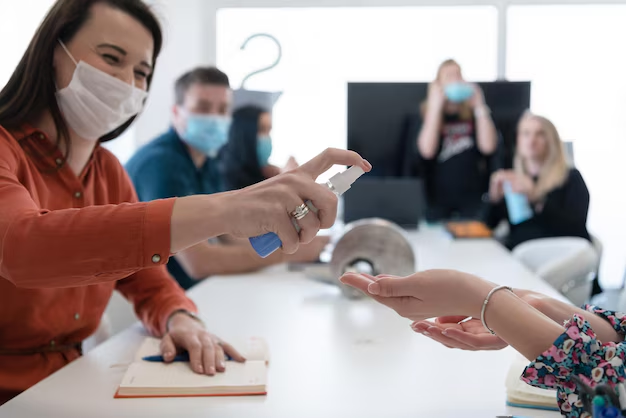Understanding Lyme Disease: Can It Be Cured?
Lyme disease—an illness many have heard of but few truly understand—has sparked countless questions and concerns, foremost among them: Is Lyme disease curable? This question is not only vital to those directly affected but also for anyone traversing tick-prone areas. Armed with the right information, we can better manage our health and make informed decisions.
What is Lyme Disease?
Lyme disease is caused by the bacterium Borrelia burgdorferi, transmitted to humans through the bite of infected black-legged ticks, commonly known as deer ticks. Initial symptoms can resemble those of the flu, including fever, headache, fatigue, and a characteristic skin rash known as erythema migrans. Left untreated, the infection can spread to joints, the heart, and the nervous system.
Early Signs and Symptoms
Early detection is key to managing Lyme disease. Here's what you should be aware of:
- Erythema Migrans Rash: Appears in 70-80% of infected people; often shaped like a bull's-eye.
- Flu-like Symptoms: Fatigue, chills, fever, headache, muscle and joint aches, and swollen lymph nodes.
- Neurological Problems: In severe cases, untreated Lyme disease can affect facial muscles, leading to facial palsy.
Is Lyme Disease Curable?
The term "curable" implies the complete elimination of a disease and its symptoms. Lyme disease, when caught early, is effectively treatable with antibiotics, which can significantly curb the infection.
Antibiotic Treatment
The standard treatment for Lyme disease is a course of antibiotics. Early-stage Lyme disease is typically treated with oral antibiotics such as doxycycline, amoxicillin, or cefuroxime axetil. Complete recovery is possible in most cases, especially if treated early.
Key Points about Antibiotic Treatment:
- Duration: The usual course is between 10-21 days.
- Response Rate: Most patients see significant improvement within weeks.
- Advanced Cases: Intravenous antibiotics might be required for patients with more severe symptoms.
What if Treatment is Delayed?
Delayed or inadequate treatment can lead to persistent symptoms and complications. In some cases, symptoms may persist even after the bacteria are cleared, a condition sometimes referred to as "Post-Treatment Lyme Disease Syndrome" (PTLDS).
Post-Treatment Lyme Disease Syndrome
PTLDS affects a subset of patients who continue to experience symptoms such as fatigue, pain, or joint and muscle aches after antibiotic treatment.
Understanding PTLDS:
- Cause: The cause of PTLDS is not completely understood, though there is no evidence that long-term antibiotic use benefits these patients.
- Recovery: Most people recover naturally with time and supportive therapies.
- Managing Symptoms: Lifestyle adjustments and symptomatic treatment can aid recovery.
Prevention: Avoiding Ticks
Prevention is your first line of defense against Lyme disease. Being tick-aware is crucial in regions where the disease is prevalent.
Practical Tips to Prevent Tick Bites:
- Avoid Tick-Infested Areas: Stick to trails and avoid high grass and wooded areas.
- Use Insect Repellent: Apply products containing DEET on exposed skin and clothing.
- Wear Protective Clothing: Long sleeves, pants, and hats can create a physical barrier.
- Check for Ticks: Conduct thorough tick checks after outdoor activities.
- Remove Ticks Properly: Use fine-tipped tweezers to grasp and steadily pull the tick straight out.
Lyme Disease in Different Regions
Lyme disease is more prevalent in specific regions, particularly in the northeastern, north-central, and Pacific coastal areas of the United States. Awareness of your area's risk level can guide preventive practices.
Regional Awareness:
- High-Risk Areas: Northeast U.S., upper Midwest, and northern California.
- Tick Season: Ticks are most active during warmer months, typically from April to September.
- Local Health Resources: Check with local health departments for region-specific information.
Noteworthy Research and Emerging Treatments
Emerging research and advancements in diagnostics offer hope for Lyme disease management. Scientists are exploring innovative diagnostic methods and potential vaccines to better combat Lyme disease.
Innovations and Future Directions:
- Improved Diagnostics: Developing more sensitive diagnostic tools for early detection.
- Vaccine Development: Scientists are working on vaccines as a potential preventive measure.
- New Treatment Strategies: Research on addressing PTLDS to relieve persistent symptoms.
Coping with Lyme Disease: Support and Resources
Living with Lyme disease or recovering from it requires support and understanding. Engaging with communities and resources can significantly aid in both mental and physical recovery.
Coping Strategies:
- Support Groups: Connecting with others can provide emotional support and practical tips.
- Mental Health: Addressing anxiety and depression, common among chronic illness sufferers, is crucial.
- Holistic Therapies: Practices like yoga and meditation may help manage stress and symptoms.
Final Insights
Lyme disease, while potentially serious, can be treated effectively, especially when caught early. Prevention remains paramount, so take proactive steps to protect yourself and loved ones. As research continues to evolve, staying informed about Lyme disease will bolster your ability to navigate health decisions confidently.
Here's a quick summary to guide your understanding and actions regarding Lyme disease:
Quick Reference Guide 📝
- 🦠 Cause: Infection by Borrelia burgdorferi bacterium.
- 🌿 Prevention: Avoid tick-infested areas, use insect repellent, conduct regular tick checks.
- 💊 Treatment: Early antibiotic treatment is highly effective; PTLDS may require symptom management.
- 🌎 Awareness: Know your region's risk level and take precautions accordingly.
- 🔬 Future Outlook: Research is ongoing for better treatments, diagnostics, and vaccines.
By staying informed and cautious, you can significantly reduce your risk of Lyme disease and be better prepared to address it if it arises.
